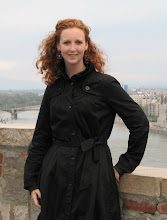A wine is considered kosher if very strict rules are followed during its creation. According to the magazine Gems In Israel, grapes from new vines cannot be used until the vine is at least four years old, the vineyard must be left fallow every seventh year, and no other vegetation can be grown in the vineyard. Only Sabbath-observing Jewish males can handle the grapes from the time they're harvested to the time the wine is put in the bottle, and therefore no work can be done on the Sabbath. No animal products are used in kosher wine production, and a symbolic 1% of the wine must be discarded as tithe. Some kosher wine is boiled in order to make it "mevushal," which means that a non-Jewish person can open and pour the wine and it will still remain kosher.

- I started Saturday's tasting with the 2006 Byblos Unoaked Chardonnay, a kosher wine made in the Mendoza region of Argentina. I tasted some nice pear notes, but it's not a wine I would buy.
- Next we tried the Yarden Mount Hermon from Galilee, a Bordeaux-style blend (cabernet sauvignon, merlot, cabernet franc) that tasted mostly of dark berries. I also noticed a strange earthy aroma that gave the wine a really unpleasant taste. Other people didn't seem to mind the funkiness.
- The third kosher wine in the tasting was Teal Lake Shiraz 2007, a spicy red wine made in Australia. Most of the customers appreciated the bold cherry flavor and fragrance.
- We finished with Golan Moscato, a sparkling dessert wine made in Israel. I can't think of any situation in which I would enjoy something so incredibly sweet, but if I ever find myself craving a light, sparkling beverage that tastes like a bonbon, I'll remember the Golan Moscato.





